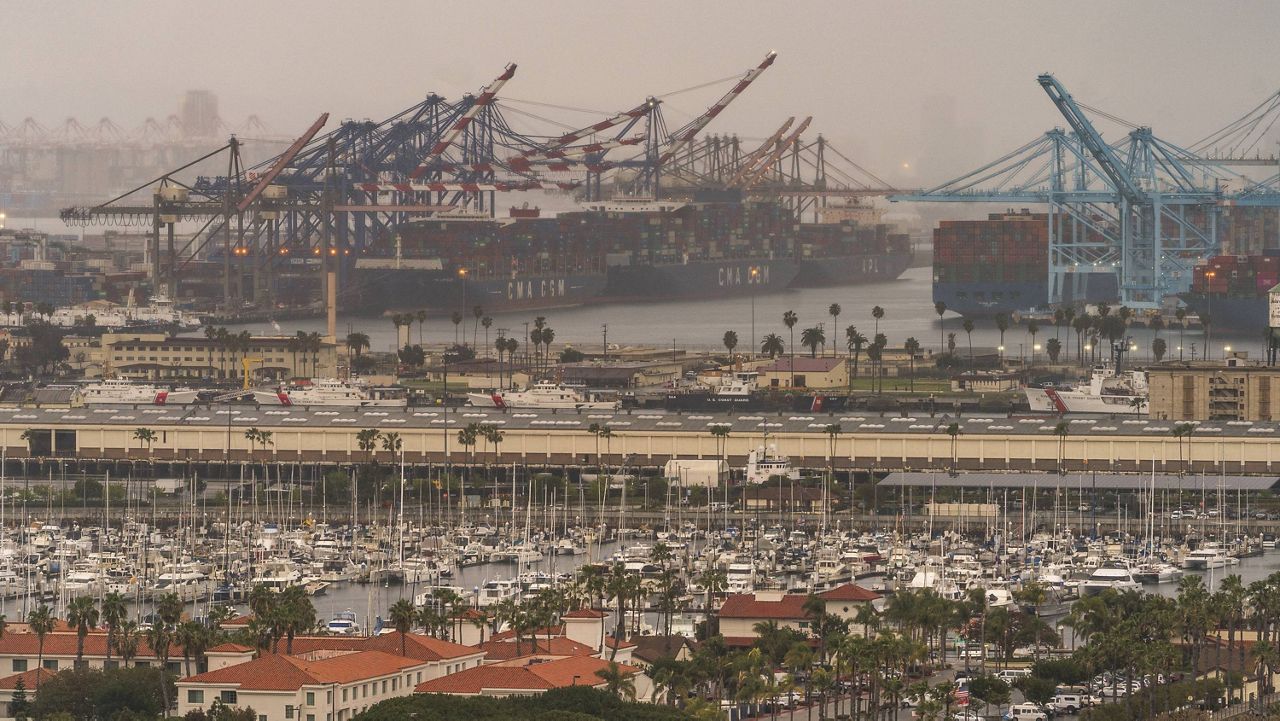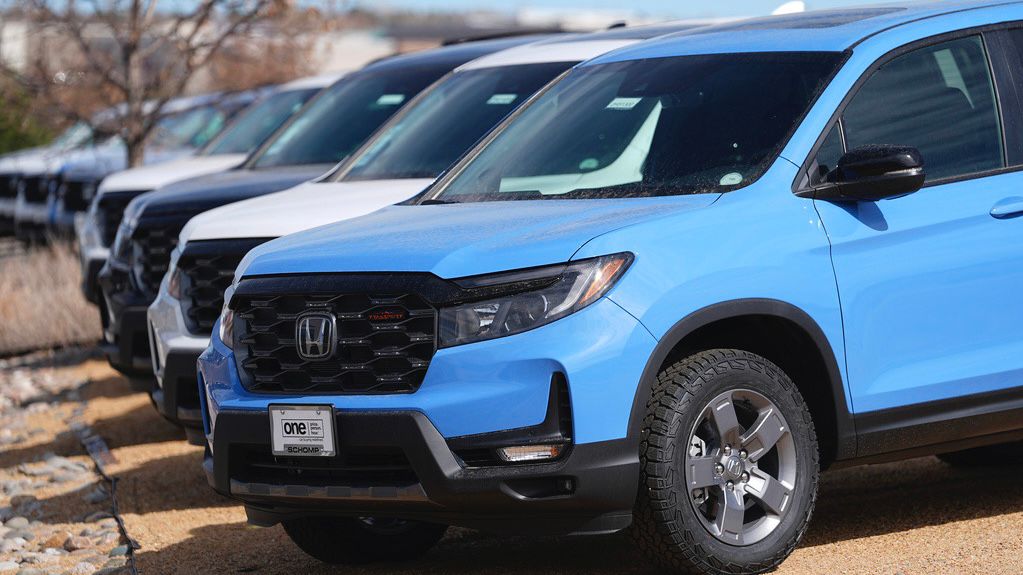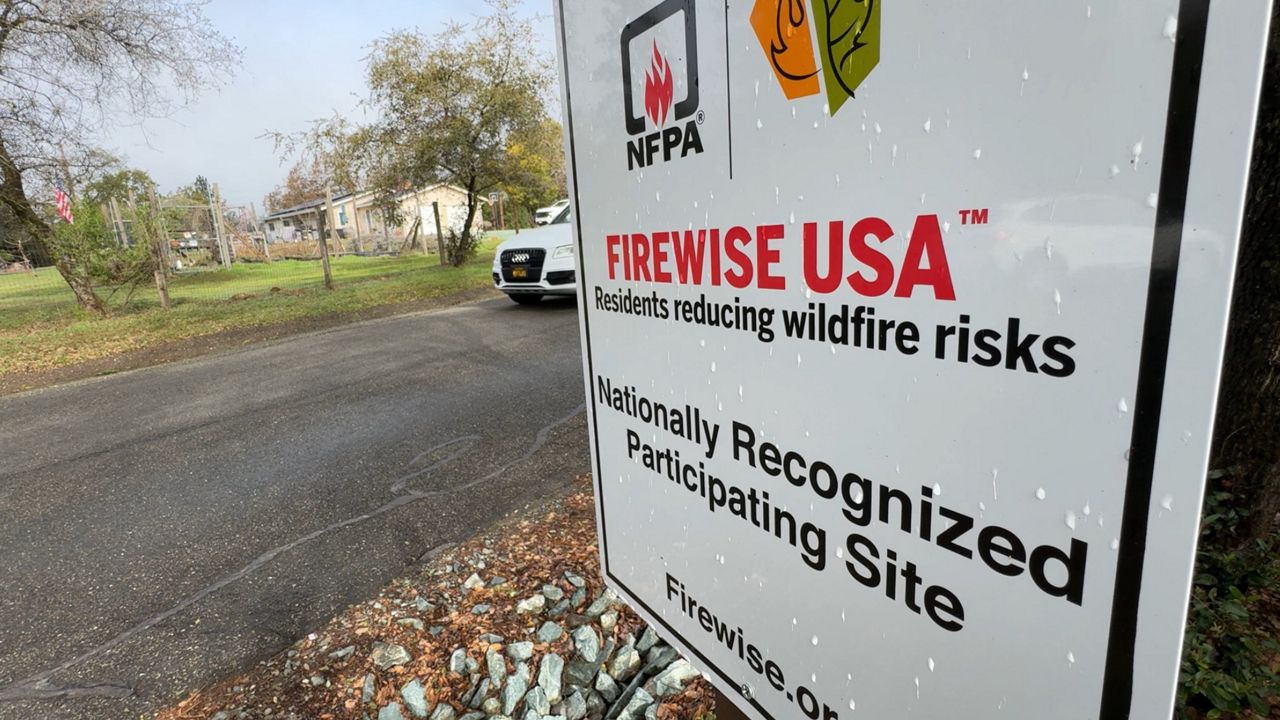The Port of Los Angeles continues to shatter records for cargo volume. The nation’s largest port handled 37.4% more shipping containers last month than a year earlier, making it the busiest April in its 114-year history.
“This marks the ninth consecutive month of year-on-year increases,” Port of LA Executive Director Gene Seroka said Thursday.
What’s driving the increase is imports, which were up 32.4% in April compared with last year. Seroka said the port handled 490,127 incoming shipping containers — a number it has only surpassed twice before.
With COVID on the wane, consumer confidence is increasing, businesses are reopening and Americans are emptying their wallets, fueling demand for everything from tennis rackets to refrigerators, almost all of which travel by ship.
The economy grew by 1.6% in the first quarter of 2021, according to the U.S. Department of Commerce, and it’s expected to grow by even stronger margins this spring. The National Retail Federation forecasts that 2021 retail sales will grow between 6.5 and 8.2% compared with 2020.
“Import volume will likely remain very strong well into the summertime,” Seroka said.
The port expects a 53% volume increase in May, a 21% increase in June and a milestone no Western Hemisphere port has ever before achieved by July 1: 10 million container units for the fiscal year.
The port has been struggling to keep up with demand since February, when it was unable to accommodate all the arriving ships and many of them were forced to anchor before unloading. But the situation is improving. Seroka said the number of ships that were sent straight to holding has dropped from 90% in February to 65% in April.
The average time a container sits at the port terminal before being shipped by rail or truck is also decreasing, from an average of five days in February to 4.2 in April.
One issue driving the congestion is an imbalance of imports to exports, Seroka said. Exports have dropped 27 out of the last 30 months at the Port of LA, with the import to export ratio last month being “the highest gap we’ve seen,” he added. In April it was 4.3 to 1, compared with 4 to 1 in March.
“The scramble for empty containers continues,” Seroka said. “There are plenty of containers. They’re just not in the right location.”
In April, 342,390 empty container units were sent back to Asia — an increase of 81.6% compared with last year.
While the majority of imports coming through the Port of LA go to major metropolitan areas, most of the nation’s exports come from rural America. Trying to move a container from Chicago to North Idaho and back to the west coast is “a high-wire act,” Seroka said.
That’s why he is calling on the federal government to fund a nationwide information sharing system to align port, truck and rail services with shipping line schedules to match the best path of travel for goods as they come and go.
“Without that, we’re not looking with a clear lens,” he said.
Such a system could be funded through President Biden’s proposed American Jobs Plan, which has carved out $17 billion for ports and waterways, as well as $100 billion for digital infrastructure nationwide. Securing funding for information infrastructure at the ports is one of the goals of Daniel Maffei, the newly appointed chairman of the Federal Maritime Commission that monitors and regulates international ocean freight for the U.S.
On Thursday, Maffei acknowledged the port of LA has been “stretched beyond any historical limit,” saying, “If anything could have lessened the problems created by this huge import boom, it would have been to have information flowing more accurately and quicker. If people know when ships are coming in and loaded, if all the lines and ports and terminals disclosed all this information, it’s good for the entire system. That’s the one thing that would have helped the system keep up.”
Maffei said one of his goals is to secure more investment in the ports because they handle 95% of the goods U.S. consumers interact with, but he supports any investment in infrastructure.
“Putting a new bridge in Arkansas will help the whole supply chain, including warehouses, rail, roads and truck stops,” he said. “We found out during COVID that things we never thought were absolutely essential are absolutely essential.”










